Hoka Wide vs Regular: Shoe Size Comparison
Last Updated: January 01, 2025 | Author: Jake Thompson
Choosing between Hoka wide vs regular shoe sizes can feel as complex as an Olympic sport, especially in finding the perfect fit. The difference isn't just about avoiding tightness or too much space; it's about discovering the ideal shoe that feels tailor-made for your feet.
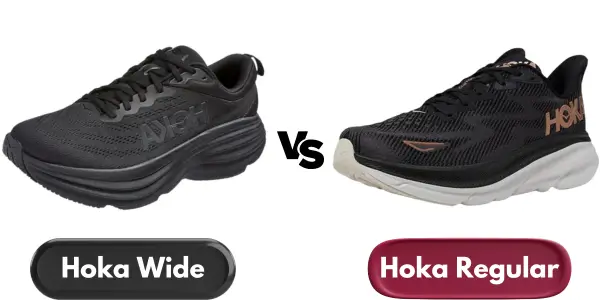
Through exploring Hoka's sizing options, I've learned vital details that could enhance your running. Let's dive into the distinctions between wide and regular Hoka shoes and how the right choice can significantly improve your running experience.
Table of Contents:
- Key Takeaways
- Hoka Size Comparisons
- Understanding Shoe Widths
- Differences Between Hoka Wide vs Regular Sizes
- Width and Fit
- Suitability for Foot Types
- How to Determine Your Ideal Shoe Width
- Model-Specific Considerations
- Impact on Performance and Comfort
- Final Verdict
- Frequently Asked Questions
Key Takeaways
- - Hoka wide shoes offer expanded roomy areas in the toe box and width, making them suitable for individuals with wide feet, flat feet, and bunions.
- - When determining the correct size, measuring the width of your feet can help you find the accurate shoe size. You can trace the outline of your larger foot on white paper and measure the length and width of the outline to determine the foot width.
- - Hoka shoes offer snug fittings, but they are not narrow. They provide extra wide-size facilities in their men's shoe line for individuals with wide feet.
- - Narrow shoes can lead to various foot problems such as bunions, hammer toes, calluses, and cuts. Wide footwear is necessary for individuals with a broader forefoot to provide more comfort and reduce the risk of foot problems.
Hoka Size Comparisons
Understanding the differences between Hoka wide vs regular shoe sizes is crucial for runners seeking optimal comfort and performance. Regular Hoka shoes offer a snug fit ideal for average foot shapes, supporting natural movements without being overly tight. Wide options, however, are a boon for those with broader feet, like mine, offering additional space to prevent blisters and discomfort during long runs.
Here's a concise comparison to illustrate the differences:
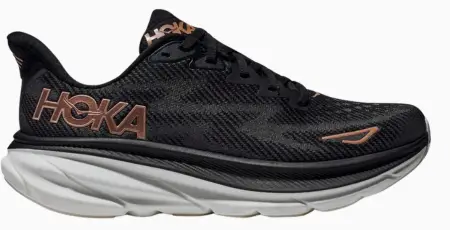
|
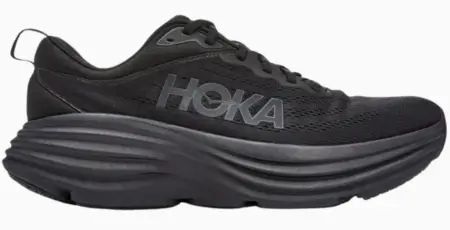
|
|
|---|---|---|
| Feature | Regular Size | Wide Size |
| Toe Box | Congested to moderate space | Expanded roomy area |
| Width (Women’s) | About 6 mm tighter | 2D size, 6 mm wider |
| Width (Men’s) | Around 8 mm less space | 8 mm to 12 mm expanded area |
| Suitability | Ideal for narrow-fitted individuals | Best for large feet, flat feet, bunions |
| Length-wise Fit | True to size | True to size with extra width |
Minor differences in shoe sizing, such as a few millimeters in width, can significantly affect the shoe's fit and comfort. Hoka's wide models, with their generous toe box and additional width, align better with my foot's contours, enhancing my running experience by alleviating pressure points and ensuring a comfortable fit.
Understanding Shoe Widths
Delving into the technicalities of shoe widths, it's crucial to understand that the right width is as significant as the correct length for optimal foot mechanics and performance. When I'm analyzing the fit of a shoe, I pay close attention to the widths available. Both Hoka regular and Hoka wide options cater to different foot structures, and it's imperative to measure my foot accurately to ensure I'm selecting the appropriate width for my needs.
Here's a breakdown of some technical aspects:
| Hoka Model | Regular Width (mm) | Wide Width (mm) | |
|---|---|---|---|
| Clifton | 100 | 108 |
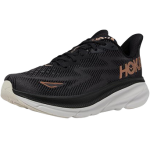
|
| Bondi | 102 | 110 |
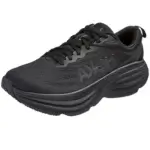
|
| Arahi | 101 | 109 |
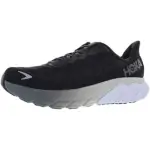
|
| Gaviota | 99 | 107 |
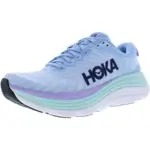
|
| Speedgoat | 98 | 106 |
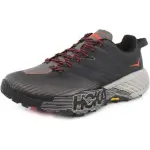
|
Related: Hoka Bondi and Clifton running shoes
These numbers are indicative of the significant variance between regular and wide fits. The Hoka wide models offer a more generous fit, allowing for expanded room across the metatarsal area, which can alleviate pressure points and enhance performance for those with wider feet. It's not merely about comfort; a proper fitting shoe width is fundamental for maintaining stability and preventing overuse injuries.
Differences Between Hoka Wide vs Regular Sizes
In assessing the Hoka footwear range, I've observed that the primary distinction between Hoka regular vs wide sizes lies in the girth of the shoe.
Wide models offer an increased toe box volume and a broader fit across the metatarsal area, which caters to runners with expansive foot dimensions or conditions like flat feet and bunions.
Find relief and a perfect fit with our guide on the best running shoes for women with bunions, complementing your Hoka choice.
Regular-sized Hoka shoes conform to standard foot width measurements, providing a snugger fit that suits the majority of the athletic population.
Width and Fit
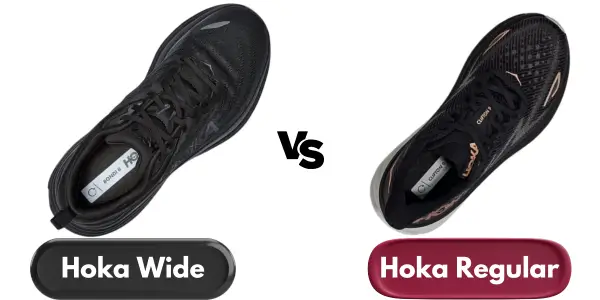
Understanding the nuances between Hoka wide and regular sizes is essential, as the right fit often dictates overall foot support and running performance.
Hoka Shoe Width Options:- - Regular Size: Standard fit for average foot width; may not suit those with a wider forefoot.
- - Wide: Provides additional space, enhancing comfort for runners with broader feet.
- - Fit: Ensures the shoe conforms well to the foot's natural shape, preventing slippage and blisters.
Suitability for Foot Types
Assessing the differences between Hoka's wide and regular size offerings reveals that each caters to distinct foot shapes, ensuring an optimal fit for varying foot widths and improving overall running performance.
Runners with broader forefeet will find the wide variant more suitable, as it provides the necessary extra space to accommodate a wider toe box, preventing the common pitfalls of a too-narrow fit such as blisters and discomfort.
Conversely, those with a slimmer foot profile will benefit from the snugger fit of the regular sizes, which aim to eliminate excessive movement within the shoe.
How to Determine Your Ideal Shoe Width
Determining your ideal shoe width is essential for optimizing comfort and performance, particularly when selecting a model like Hoka that offers diverse width options. When I'm on the hunt for the perfect running shoes, I don't just look for size; I dive into the specifics of shoe width to ensure a precise fit.
Here's how I measure for the right width:
Measuring Foot Width- - Trace & Measure: First, I trace my foot on paper and measure at the widest point to get my foot's width.
- - Size Charts: I then compare my measurements against Hoka's size chart, which lists shoe width specifications.
- - Wide vs Regular: Understanding the difference between wide and regular options in Hoka's footwear lineup is crucial.
For technical analysis, I consider the biomechanics of my feet. A wider shoe width is often recommended for:
- - Optimal load distribution
- - Accommodating natural foot splay during stride impact
- - Reducing the risk of blisters and hot spots
In performance-oriented footwear like Hoka, the precise fit ensures a harmonious balance between comfort and efficiency. It's not just about whether the shoe feels snug; it's about how the contours and width of the running shoes synergize with my foot's anatomy, allowing for a responsive and uninhibited running experience.
Related: Hoka Arahi vs Clifton running shoes
Model-Specific Considerations
After pinpointing the optimal width for my running shoes, I now turn to scrutinize the model-specific features that can further enhance my running performance. Model-specific considerations are pivotal when comparing Hoka-wide and regular options. Each style within the brand boasts unique attributes that cater to different demands of a runner's foot mechanics and gait cycle.
I gravitate towards models that offer a harmonious blend of cushioning and stability. The wide variant often provides the same high-quality midsole technology as the regular, yet the modifications in the upper construction to accommodate a broader foot can differ. It's imperative to select a model where these alterations don't compromise the integrity of the shoe's performance features.
In delving into the minutiae of the shoes, I assess the EVA foam density, heel-to-toe drop, and meta-rocker geometry. These elements must synergize to propel me forward efficiently while ensuring ample support. The wide style shouldn't just be about increased girth; it must maintain the brand's hallmark running efficiency.
Impact on Performance and Comfort
Selecting the proper shoe width is crucial, as it directly influences my running efficiency and overall foot comfort during long-distance endeavors. When I'm looking into Hoka options, the distinction between wide and regular models is more than a mere detail; it's a critical factor in my performance and comfort levels. Here's a technical breakdown:
Foot Mechanics and Shoe Fit- - Stability: A wide shoe offers a broader base, enhancing my stability and reducing the risk of overpronation.
- - Pressure Distribution: The increased space in wide shoes helps distribute pressure evenly across my foot, mitigating hot spots and discomfort.
- - Toe Splay: Ample room in the toe box of wide shoes allows for natural toe splay, which is vital for efficient energy transfer and propulsion.
Material Wear and Longevity
- - Stretch and Stress: Regular shoes may overstretch and wear out faster if they're too narrow, while wide shoes maintain their shape better for my foot type.
- - Seam Durability: A proper fit reduces the strain on seams, prolonging the life of the shoe.
Performance Considerations
- - Speed and Energy Efficiency: The correct width ensures optimal contact with the ground, improving my speed and energy efficiency.
- - Endurance: Comfortable shoes mean less distraction and fatigue, so I can focus on endurance rather than foot pain.
Final Verdict
After thoroughly exploring the nuances between Hoka's wide and regular shoe sizes, it's clear that the best choice heavily depends on your individual foot structure and running needs. For runners with wider feet, flat feet, or bunions, Hoka's wide shoes emerge as the ultimate game-changer, offering extra room in the toe box and width to avoid discomfort and potential foot problems. My firsthand experience underscores the importance of these wide options in preventing blisters and enhancing comfort during long runs. The additional space not only supports natural foot movements but also contributes to better stability and pressure distribution, which are crucial for optimal performance and endurance.
Frequently Asked Questions
1. What is the difference between Hoka wide and regular sizes?
The primary difference lies in the width; wide sizes offer more space across the midfoot and forefoot, which can be a big relief for people with broader feet. Regular sizes generally fit most foot shapes, but those with wider feet may see an instance of discomfort due to a tighter fit.
2. Why do some people prefer Hoka wide sizes?
Several people prefer Hoka wide sizes because they provide extra room that can prevent issues like blisters and bunions caused by shoes that are too narrow. This is especially crucial for runners or anyone who spends a lot of time on their feet.
3. Can wearing the wrong width in Hoka running shoes cause problems?
Yes, wearing shoes that are too narrow or too wide can cause several issues, such as discomfort, blisters, and even structural foot problems over time. It's crucial to choose the right width to ensure full comfort and support.
4. How do I know if my Hoka shoes are wide?
To determine if your Hoka shoes are wide, check the shoe box or the label inside the shoe for a "W" or "Wide" designation. This marking indicates the shoe is a wide width. If you can't find such a label, the shoe is likely in a regular width.
Share this:







